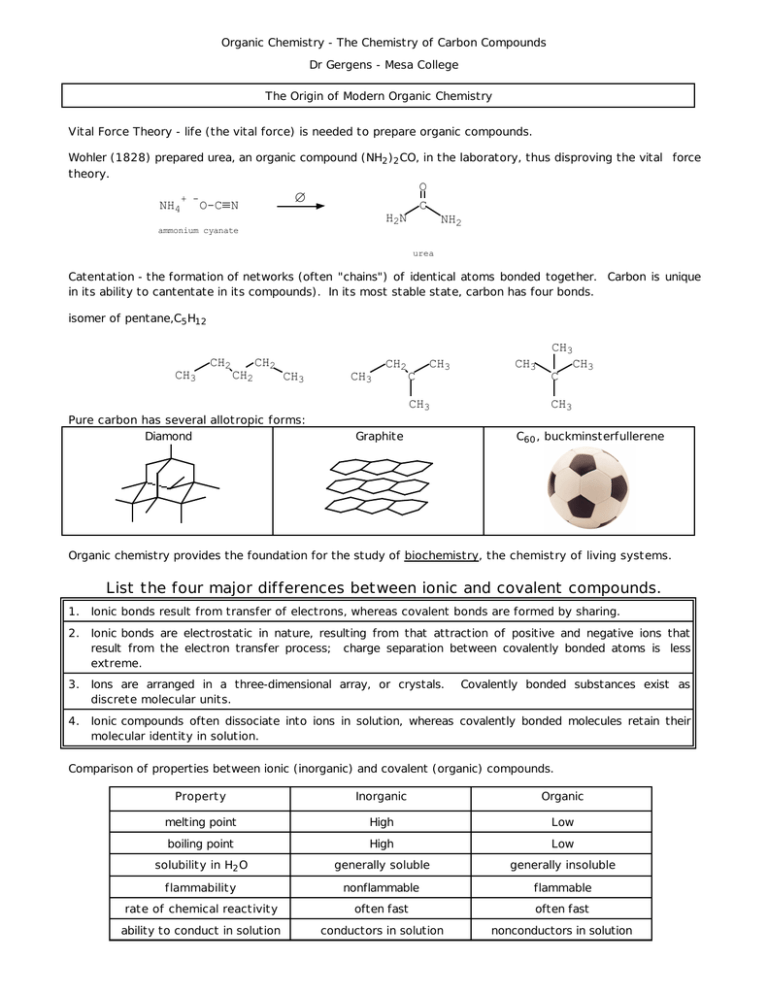List the four major differences between ionic and covalent compounds.
advertisement

Organic Chemistry - The Chemistry of Carbon Compounds Dr Gergens - Mesa College The Origin of Modern Organic Chemistry Vital Force Theory - life (the vital force) is needed to prepare organic compounds. Wohler (1828) prepared urea, an organic compound (NH2 )2 CO, in the laboratory, thus disproving the vital force theory. NH4 + - O C ∆ O-C≡ N H2N NH2 ammonium cyanate urea Catentation - the formation of networks (often "chains") of identical atoms bonded together. Carbon is unique in its ability to cantentate in its compounds). In its most stable state, carbon has four bonds. isomer of pentane,C5 H12 CH2 CH3 CH2 CH2 C CH3 CH3 C CH3 CH3 CH2 CH3 Pure carbon has several allotropic forms: Diamond CH3 CH3 Graphite CH3 C60 , buckminsterfullerene Organic chemistry provides the foundation for the study of biochemistry, the chemistry of living systems. List the four major differences between ionic and covalent compounds. 1. Ionic bonds result from transfer of electrons, whereas covalent bonds are formed by sharing. 2. Ionic bonds are electrostatic in nature, resulting from that attraction of positive and negative ions that result from the electron transfer process; charge separation between covalently bonded atoms is less extreme. 3. Ions are arranged in a three-dimensional array, or crystals. discrete molecular units. 4. Ionic compounds often dissociate into ions in solution, whereas covalently bonded molecules retain their molecular identity in solution. Covalently bonded substances exist as Comparison of properties between ionic (inorganic) and covalent (organic) compounds. Property Inorganic Organic melting point High Low boiling point High Low solubility in H 2 O generally soluble generally insoluble flammability nonflammable flammable rate of chemical reactivity often fast often fast ability to conduct in solution conductors in solution nonconductors in solution



